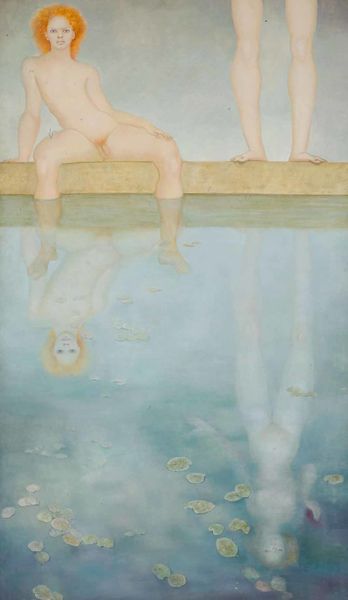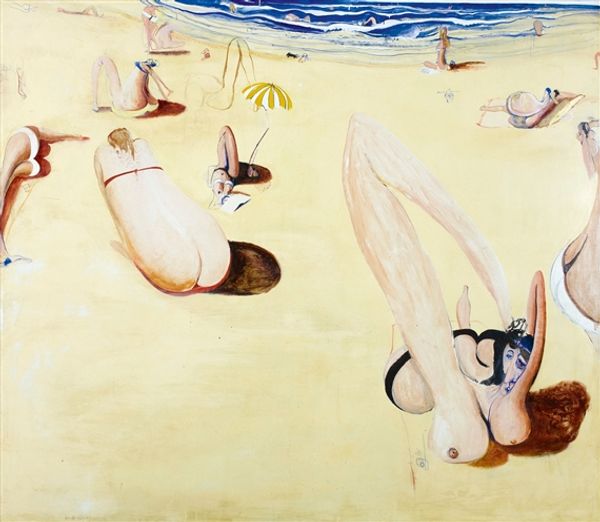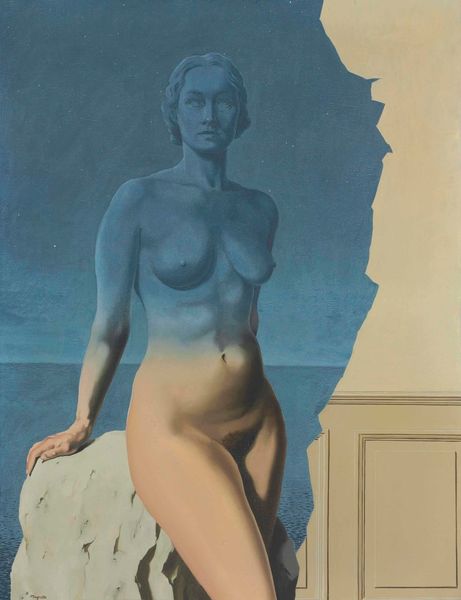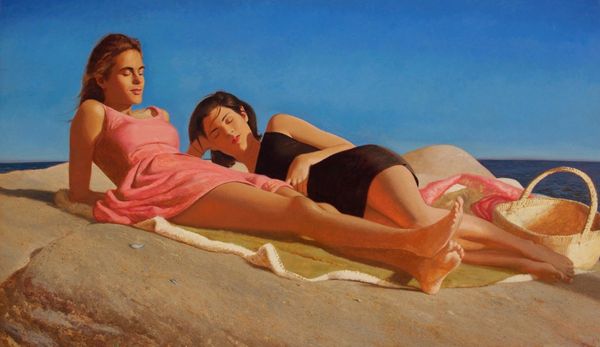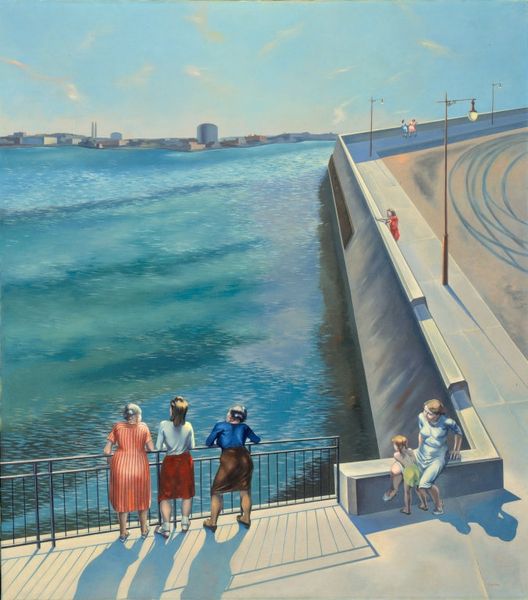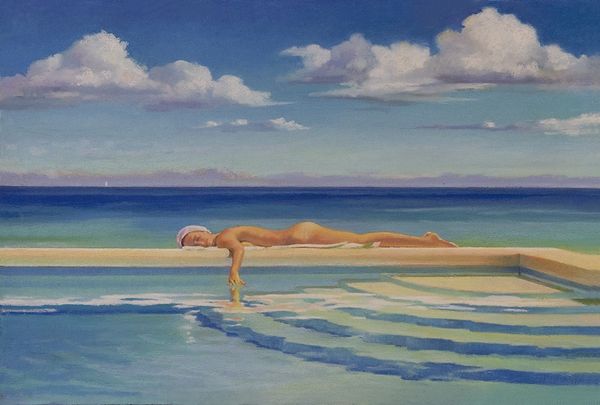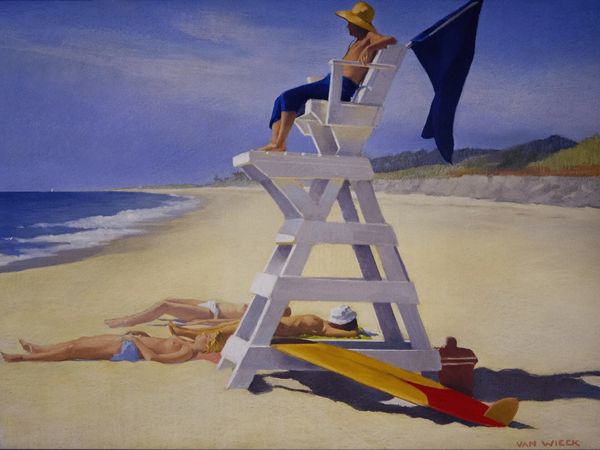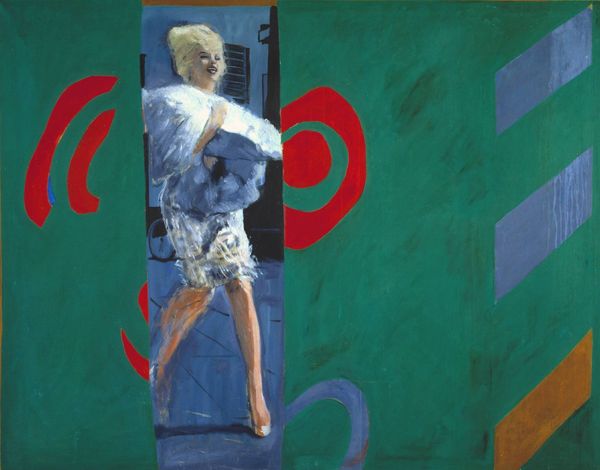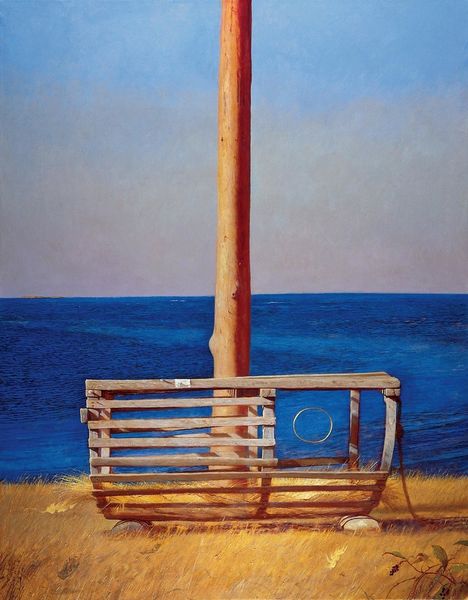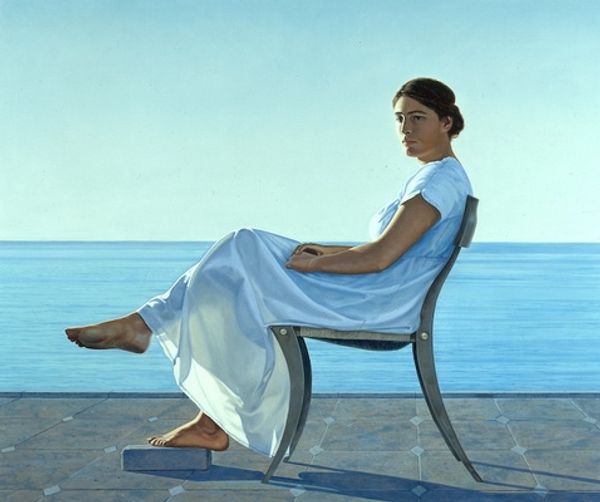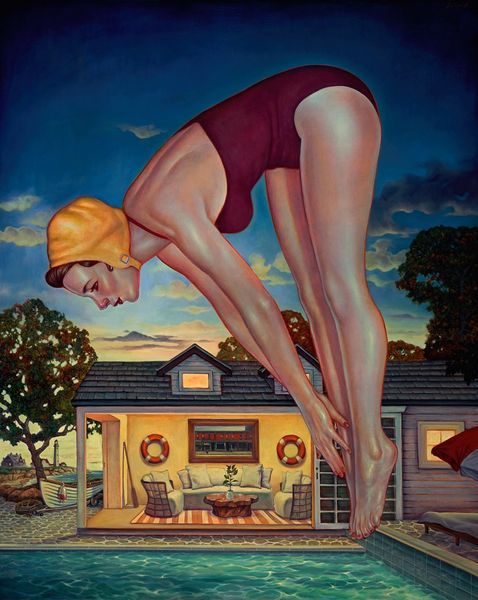
painting, plein-air
#
portrait
#
painting
#
plein-air
#
landscape
#
oil painting
#
genre-painting
#
portrait art
#
modernism
#
realism
Copyright: A.C.Fine Art Inc.
Curator: This is Alex Colville's "Woman on Ramp," an oil painting from 2007. It presents a mature woman in a bathing suit descending a ramp towards the sea. What's your first impression? Editor: The stillness is striking. A quiet, contemplative mood pervades. The woman seems poised between worlds, doesn’t she? Between land and water, reflection and action. Curator: Indeed. Colville often explores liminal spaces, both physical and psychological. Given the social and political undercurrents of his time, how might we read this figure's vulnerability? Does the composition, the stark realism, somehow challenge idealized images of women so prevalent in art history? Editor: Perhaps. Though there's something undeniably timeless in the symbol of the ramp and the sea. Ramps are bridges—transitional spaces and represent access, agency, yet there is this woman, holding tightly, using that tool… Curator: Access and support. She seems self-possessed but cautious. Is there a visual link to age, mortality, or fragility? Are we invited to engage in societal constructions surrounding age and the female body? Editor: Potentially. The water, too, always represents change, rebirth, a journey into the unknown. Here, the sea behind those railings almost seems indifferent to her crossing. Are we facing a powerful message about facing our own inevitable transformations? Curator: Absolutely. We also might reflect on ideas of public and private in play. There is the sense of an intimate moment made public, particularly regarding female agency over aging. Colville often situated ordinary moments within larger socio-political landscapes. How do these aspects contribute to the picture's unsettling atmosphere? Editor: You’re right; this feels very intimate despite the public stage that's constructed here. That image, in her striped swimsuit, framed by the geometric lines of the ramp is hard to turn away from… What cultural scripts of memory and history does this narrative evoke in you? Curator: Considering the painting through the lens of second-wave feminism and issues around representation is essential. We must acknowledge the limitations and progress that were still taking place during the artwork’s construction. Editor: Seeing it this way reframes my response. Considering her age, this artwork strikes a chord in me for it makes a broader commentary about expectations and individual strength through the symbolic. Curator: Precisely. It provides a valuable opportunity to assess how social structures mediate one’s sense of self. Editor: Thank you, this has offered a fresh way of observing an apparently simple but in fact remarkably complex scene.
Comments
No comments
Be the first to comment and join the conversation on the ultimate creative platform.
